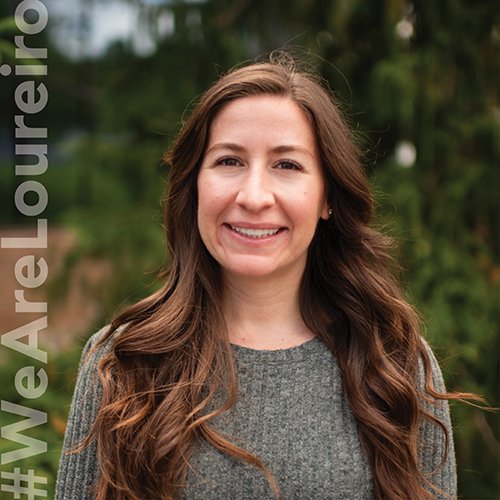Emily Kelting, Project Manager
June 12th, 2025

Engineered to Lead: How Emily Kelting Found Her Path—and Her Voice—at Loureiro
This blog spotlights Emily Kelting, Project Manager in Loureiro’s Civil Engineering division, whose career path reflects the value of curiosity, cross-disciplinary collaboration, and continuous growth. Originally a math major at UConn, Emily discovered engineering as a way to apply problem-solving to real-world results—an approach that continues to guide her work today. From intern in the Environmental division to leading complex site design projects and mentoring others, Emily’s story illustrates how Loureiro’s team-first culture and hands-on opportunities support both technical advancement and professional leadership. Her involvement in the company’s ESOP Committee also underscores the sense of ownership and engagement that defines Loureiro’s employee experience.
Emily Kelting didn’t start out having plans on becoming an engineer. In fact, her initial pursuit at University of Connecticut (UCONN) was a degree in Mathematics.
“I started school as a Math major,” she recalls. “I was putting in a lot of hard work but never really felt like I was seeing an end result beyond the answer to an equation. I took some Civil and Environmental Engineering classes and realized that engineering let me apply all the math I liked with a tangible outcome. You’re doing lots of calculations, but there’s a finished product at the end.”
Emily earned her degree in Civil Engineering from UCONN, with a minor in Environmental Engineering. She had started working Loureiro as an intern with the Environmental Engineering division the summer before her senior year. After graduation, she joined full-time.
Early in her career at Loureiro, Emily had the opportunity to collaborate with the Civil Engineering division on a few projects, and found that she really liked the work they were doing.
“One of the first projects I worked on with the civil group was a design for an ice skating rink on the site of a former landfill,” Emily says. “There were a lot of environmental and civil engineering components to it, and I found the design work exciting.”
It was enough to get Emily thinking about making a change, and after speaking with George Andrews — who was running the division at the time — and Dave Fiereck, she made the switch and has been with the division ever since.
That decision shaped her path at Loureiro, where she has grown into the role of Project Manager, working closely with clients while continuing to deepen her technical knowledge across a wide range projects. At Loureiro, collaboration is key to making these types of projects successful.
“Teamwork is everything,” she says. “And Loureiro takes that seriously. A lot of our work crosses several of our disciplines and we’re encouraged to learn from each other. I’ve had opportunities to brainstorm with other engineers who are incredibly knowledgeable, have been in the industry for a long time, and are willing to share what they know.”
Emily is also active outside of project work. She’s a member of Loureiro’s ESOP Committee, helping educate colleagues on how the company’s employee ownership model works and what it means in practice.
“We’re all stakeholders here. That’s a big part of why people care so much about the work we’re doing,” she says. “One of the main objectives of the ESOP committee this year is to increase ESOP education within the company. This will include lunch and learns, recurring email updates, and continuing our annual events like the ESOP Games in October, which is always a fun time.”
Her curiosity about the company’s ownership structure is what originally brought her to the committee.
“I wanted to learn more about how the ESOP works, and being part of the committee was the best way to do that. Plus, it’s fun. We get to host events, eat pizza, and connect with coworkers.”
Today, as she juggles client needs, project milestones, and mentoring younger engineers, Emily says she’s motivated by progress—both personal and professional.
“Being able to drive by a site that we worked on and see a building, a finished project, and know that my efforts helped make that happen—that’s the best part of the job.”




